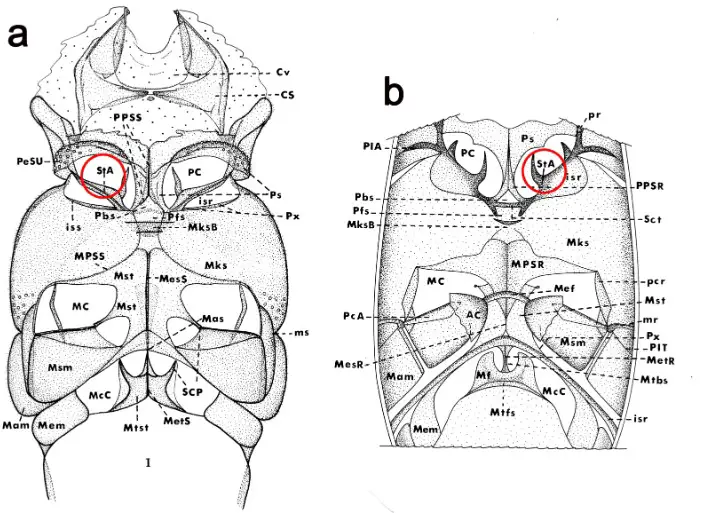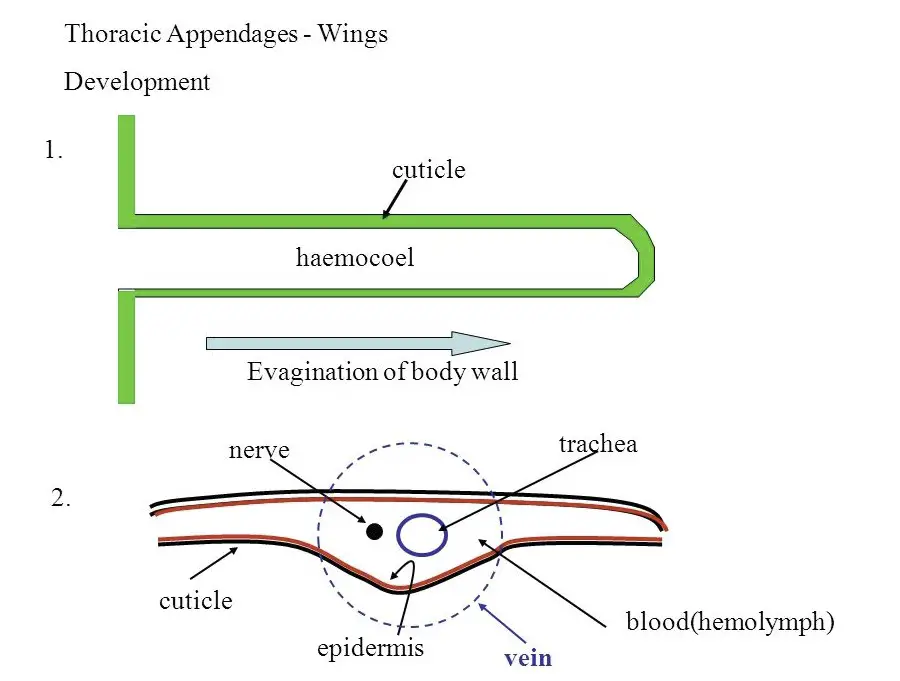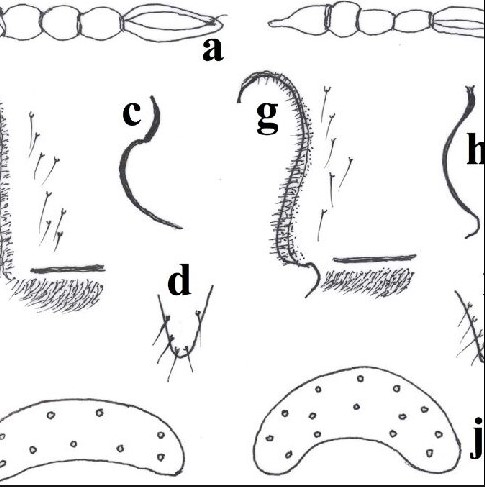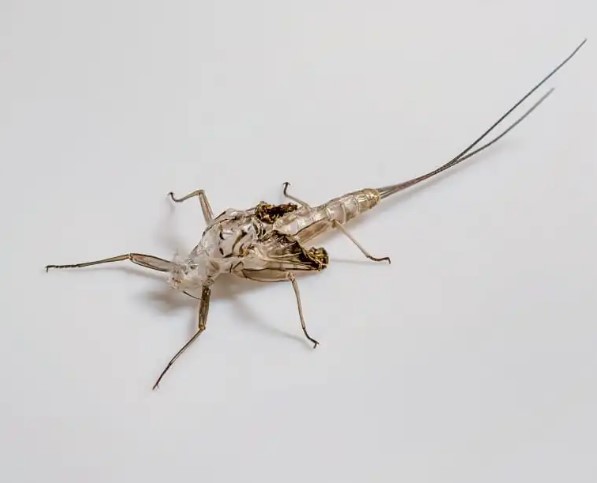Apodemes and apophyses are terms that frequently appear in discussions about anatomy and paleontology, yet they often fly under the radar of widespread recognition. Despite their lack of fame, these structures play pivotal roles in the physiology of various organisms, from the tiniest insects to the largest dinosaurs. By understanding the difference between apodeme and apophysis, we unlock a deeper comprehension of how living things are built and how they function.
Apodemes are internal ridges or projections found in the exoskeletons of arthropods, serving as attachment points for muscles, thereby facilitating movement. Apophyses, on the other hand, are bony projections seen mostly in vertebrates, where they serve similar purposes but are involved in the skeletal system, offering sites for ligament and tendon attachment. These distinctions are not just academic; they underscore fundamental differences in the architecture of life forms across the evolutionary spectrum.
While apodemes are primarily associated with the world of insects and similar creatures, providing structural support and enabling complex movements, apophyses have a broader role in the anatomy of vertebrates, including humans. Their presence and specific formations can inform us about evolutionary processes, biomechanical functions, and even the health of individual organisms. This insight into their nature and function sheds light on the intricate tapestry of life, revealing the complex interactions between structure and function that define the living world.

Basic Concepts
Anatomy 101
The world of anatomy is vast and complex, encompassing everything from the cellular level to the structure of entire organisms. It’s a field that not only reveals how living things are put together but also how these structures function in harmony to sustain life. Two lesser-known but critically important terms in this field are apodeme and apophysis. These structures, while not commonly discussed outside of specialized biology or paleontology circles, play vital roles in the anatomy of various creatures.
Definition of Apodeme
An apodeme is a structural feature found primarily in the exoskeletons of arthropods, such as insects, spiders, and crustaceans. It is an inward folding of the exoskeleton that serves as an attachment point for muscles. This is crucial for movement, as the muscles pull on the apodeme to create leverage, allowing the organism to move.
Definition of Apophysis
In contrast, an apophysis is a bony protrusion found in vertebrates. It is part of the skeletal system and serves as an attachment point for muscles and ligaments. Unlike apodemes, which are specific to arthropods, apophyses are found in a wide range of vertebrates, including humans.
Structural Importance
Role in Organisms
Both apodemes and apophyses are essential for movement and physical support in their respective organisms. They allow for the attachment of muscles and ligaments, facilitating motion and providing structural integrity.
Examples in Nature
- Insects: The apodeme in an insect’s leg allows it to jump or run.
- Birds: The apophysis on a bird’s wing bones serves as attachment points for flight muscles.
- Humans: The tibial tuberosity, a well-known apophysis, is where the patellar ligament attaches.
Apodeme Explored
Key Characteristics
Composition
Apodemes are made of chitin, a strong and flexible material that makes up the exoskeleton of arthropods. This composition allows apodemes to be both sturdy and lightweight, an essential combination for the mobility of these organisms.
Functionality
The primary function of an apodeme is to serve as an anchor for muscle attachments, enabling movement. Without apodemes, insects and other arthropods would not be able to perform basic actions like walking, flying, or feeding.
In Insects
Structural Role
In insects, apodemes are integral to the design of their bodies. They are strategically located to maximize efficiency in muscle use, providing the necessary leverage for movement.
Evolutionary Significance
The evolution of apodemes has been pivotal in the success of arthropods, allowing them to occupy a variety of ecological niches. Their design is a testament to the power of evolutionary adaptation, enabling insects to become one of the most diverse and widespread groups of organisms on Earth.
Apophysis Unveiled
Distinct Features
Composition
Unlike the chitinous nature of apodemes, apophyses are made of bone. This difference in material reflects the contrasting evolutionary paths and structural needs of vertebrates compared to arthropods.
Functionality
Apophyses enhance the skeletal system’s functionality by providing robust sites for muscle and ligament attachment. This not only facilitates movement but also contributes to the overall stability and flexibility of the vertebrate body.
In Vertebrates
Role in Skeletal System
The skeletal system of vertebrates relies heavily on apophyses for muscle attachment and leverage. These bony protrusions are essential for a wide range of movements, from the delicate maneuvering of a bird’s flight to the powerful strides of a running mammal.
Case Studies: Dinosaurs and Birds
- Dinosaurs: The study of dinosaur fossils has revealed the presence of large apophyses, suggesting these creatures had powerful muscles for movement and possibly for thermoregulation.
- Birds: The evolution from dinosaurs to birds saw changes in the apophyses that reflect adaptations for flight, with lighter, more aerodynamically shaped structures that still provide muscle attachment for the demands of flying.

Comparative Analysis
Structural Differences
Material Composition
The foundational distinction between apodemes and apophyses lies in their material composition. Apodemes are formed from chitin, a durable yet flexible material that is key to the exoskeletons of arthropods. This material allows for both protection and mobility, essential traits for the survival of insects and similar creatures. On the other hand, apophyses are bony outgrowths, composed primarily of calcium phosphate. This difference underscores the divergent evolutionary paths of arthropods and vertebrates, reflecting their unique structural and environmental challenges.
Attachment and Function
While both structures serve as attachment points, their specific functions highlight the diversity of life’s mechanical designs. Apodemes provide a point of leverage for muscles within the rigid exoskeletons of arthropods, facilitating movement without the need for internal bones. Apophyses, in contrast, are integral to the skeletal systems of vertebrates, offering sites for tendons and ligaments to attach, thereby enabling a wide range of movements from delicate to powerful actions.
Evolutionary Insights
Adaptation Over Time
The evolutionary journey of apodemes and apophyses showcases nature’s ingenious solutions to the problem of movement and support in vastly different anatomical frameworks. Apodemes evolved as part of the exoskeletal armor of arthropods, a system that provides both protection and mobility without the weight of an internal skeleton. In vertebrates, the evolution of apophyses reflects a shift towards internal skeletal support systems, where bones not only support the body but also facilitate complex movements through lever mechanisms.
Significance in Species Differentiation
The presence and development of apodemes and apophyses are significant markers of evolutionary adaptation, contributing to the differentiation of species. In arthropods, the variation in apodeme structure can influence the efficiency of movement, impacting the organism’s ability to feed, mate, and survive. In vertebrates, the size, shape, and location of apophyses can determine the range and type of movement possible, influencing everything from feeding behaviors to predator avoidance.
Application and Relevance
In Research
Paleontological Implications
The study of apodemes and apophyses offers valuable insights into the lifestyles of extinct species. In paleontology, the examination of these structures in fossilized remains can reveal much about the movement capabilities and ecological niches of dinosaurs, early mammals, and other ancient life forms. Understanding the functional implications of these structures helps scientists reconstruct the living habits and environments of creatures that roamed the earth millions of years ago.
Modern Biological Studies
In modern biology, research into apodemes and apophyses contributes to our understanding of evolutionary biology and anatomy. By comparing these structures across a broad spectrum of species, scientists can trace the evolutionary history of movement and support systems, providing insights into how different life forms have adapted to their environments over time.
Practical Implications
Medical Field
In the medical field, knowledge of apophyses is directly relevant to understanding human anatomy and treating skeletal-related conditions. Conditions such as apophysitis, inflammation of the apophysis due to repetitive stress or injury, are common in growing adolescents engaged in sports. Orthopedic surgeons and physical therapists rely on an understanding of these structures to diagnose, treat, and manage conditions affecting the musculoskeletal system, highlighting the practical importance of these anatomical features.
Biomechanical Engineering
The study of apodemes and apophyses extends beyond biology and medicine into the realm of biomechanical engineering. Engineers and designers often look to nature for inspiration in creating more efficient and adaptive mechanical systems. The principles underlying the functionality of apodemes and apophyses can inspire innovations in robotics, prosthetics, and other areas where the interface between biological and mechanical systems is critical. For instance, the design of robotic limbs may incorporate principles learned from the structure and function of apodemes, offering new levels of efficiency and adaptability in artificial mobility solutions.

Frequently Asked Questions
What is an Apodeme?
An apodeme is an internal ridge or projection in the exoskeleton of an arthropod that provides a surface for muscle attachment. This feature is crucial for movement and support, allowing these organisms to perform various activities essential for survival, such as walking, flying, and feeding.
How does an Apophysis differ from other bone projections?
An apophysis differs from other bone projections primarily in its function and location. It serves as a site for the attachment of muscles and ligaments, playing a critical role in the movement and stability of vertebrates. Unlike other projections that may only serve a protective or stabilizing role, apophyses are integral to the skeletal system’s functionality.
Why are Apodemes and Apophyses important in paleontology?
In paleontology, apodemes and apophyses provide crucial clues about the locomotion, behavior, and evolutionary adaptations of extinct species. By studying these structures, scientists can infer muscle arrangements, movement capabilities, and even ecological niches of creatures that roamed the Earth millions of years ago, offering a window into the past.
Can humans have Apophyses?
Yes, humans have apophyses, which are bony outgrowths that serve as attachment points for muscles and ligaments. These structures are especially notable during growth phases when they can be sites of tenderness or pain, often referred to as growing pains. Understanding apophyses is vital in fields like orthopedics and physical therapy.
Conclusion
The exploration of apodemes and apophyses opens a fascinating window into the biological complexity of life on Earth. By distinguishing between these two structures, we gain insight into the vast diversity of organisms, their evolutionary histories, and how they navigate their environments. These insights underscore the incredible adaptability of life and the specific mechanisms through which various forms of life achieve movement and structural integrity.
This knowledge is not only of academic interest but has practical applications in medicine, biomechanics, and conservation efforts. Understanding the intricate details of our world’s biological architecture enables us to appreciate the nuances of life’s design and fosters a deeper respect for the natural world. As we continue to explore and understand these structures, we unlock new possibilities for innovation and discovery, bridging the gap between ancient life forms and modern biomedical advancements.

